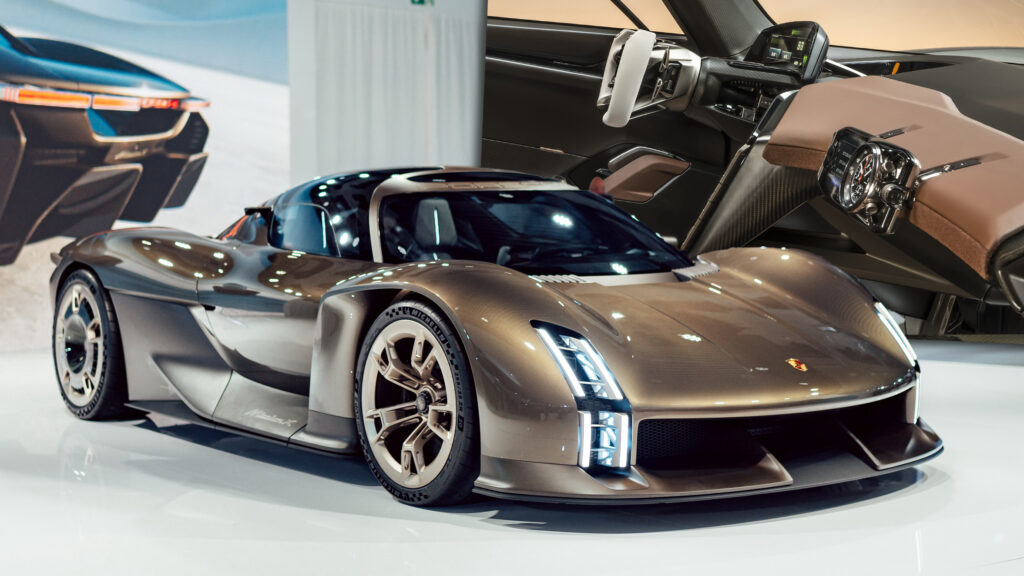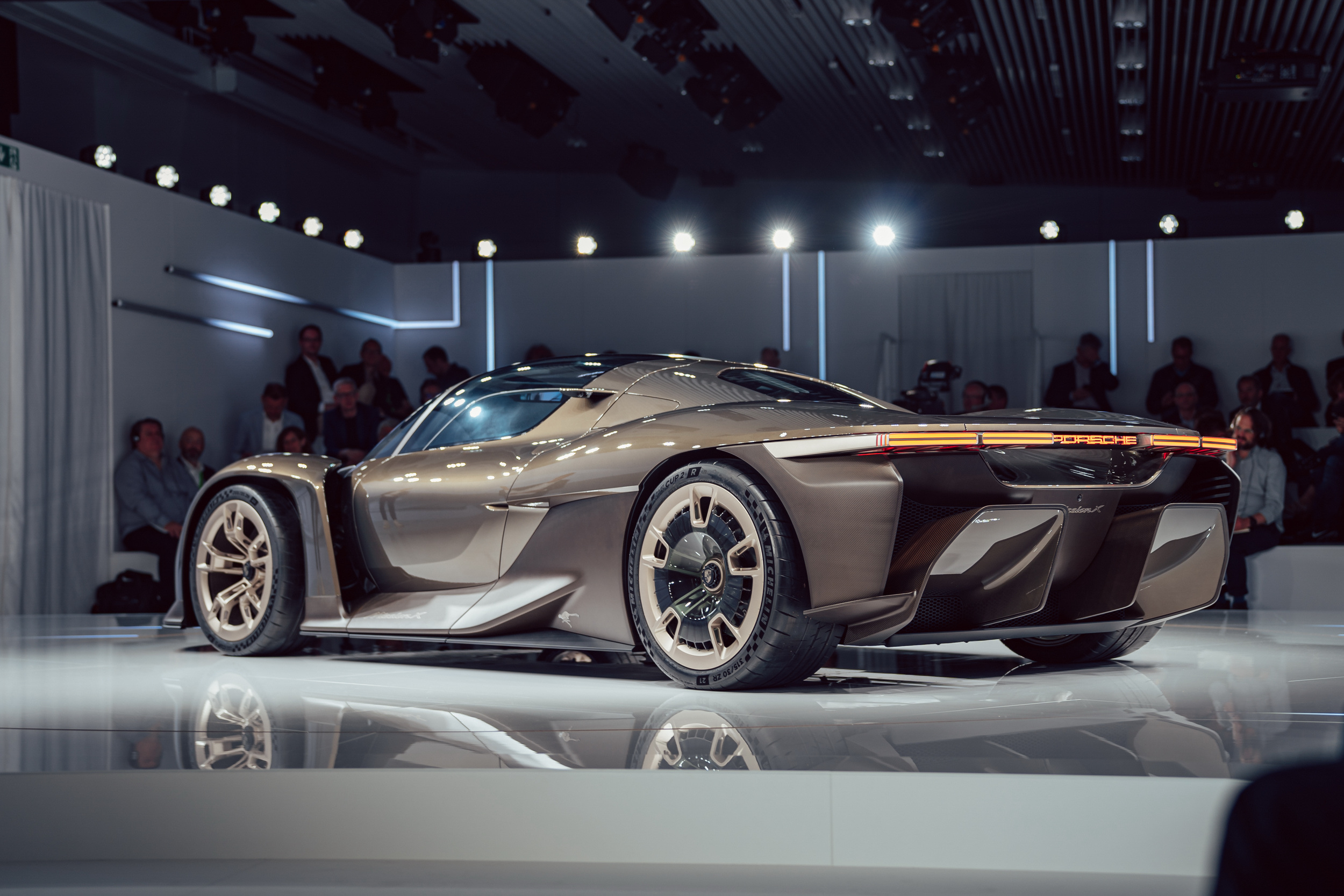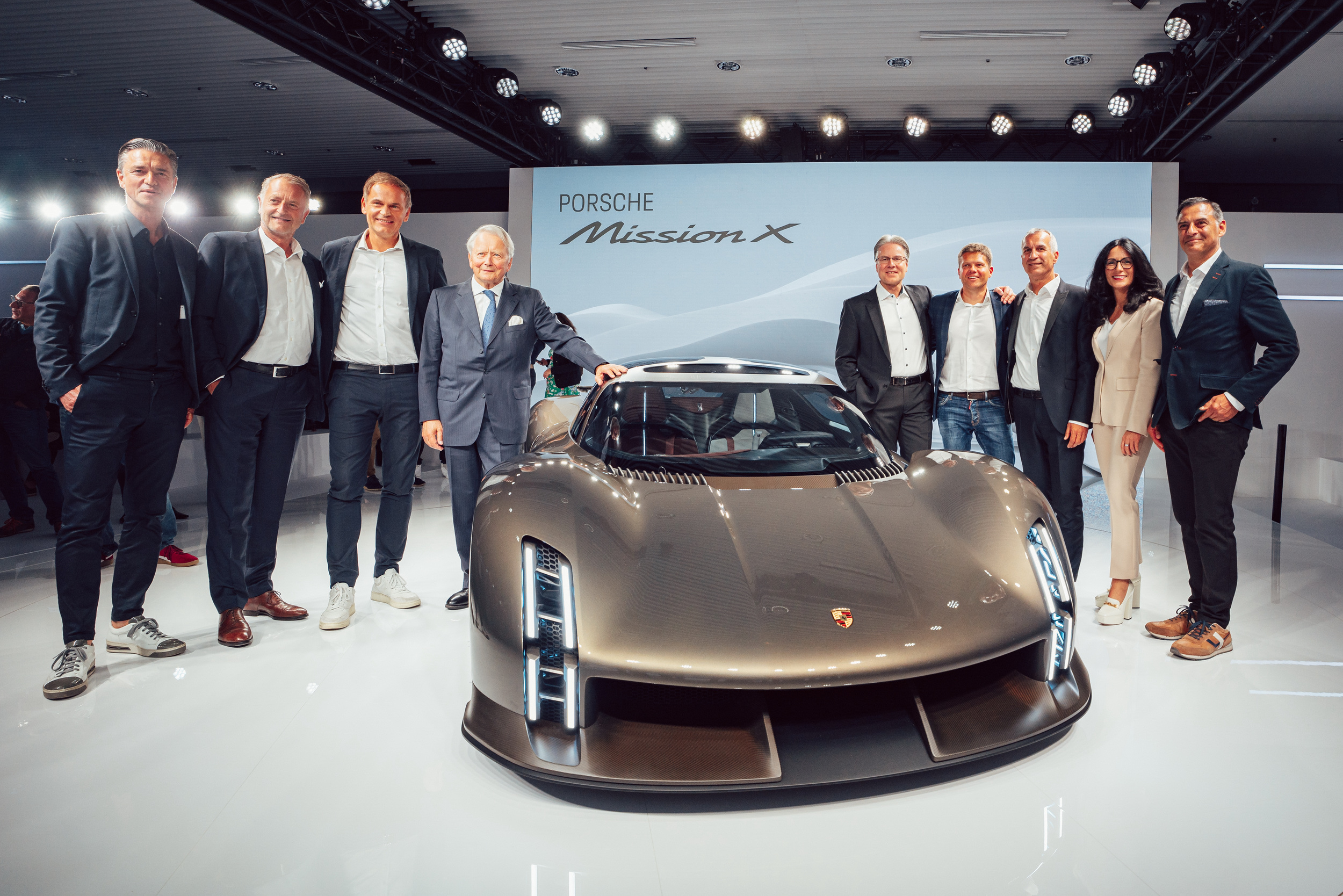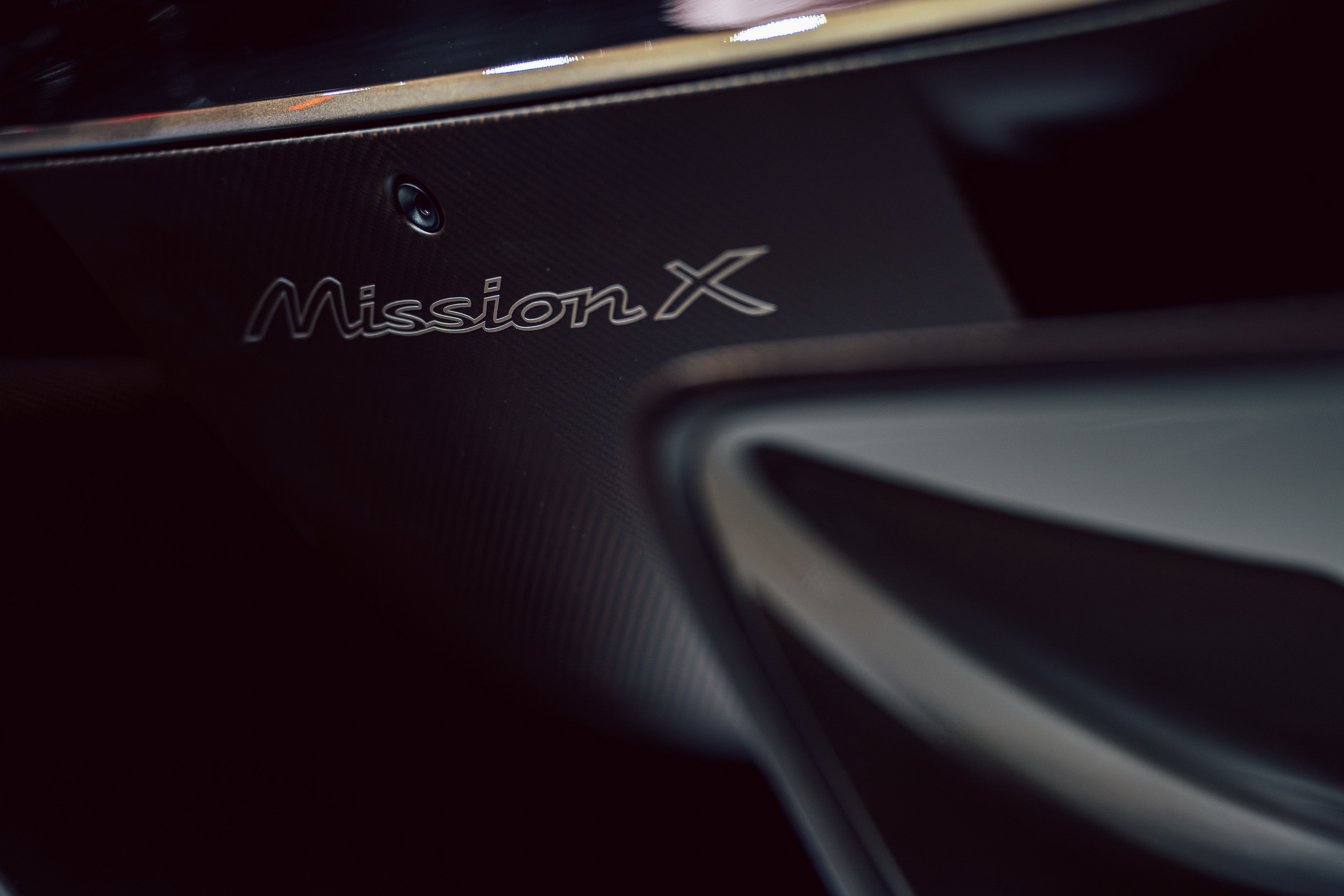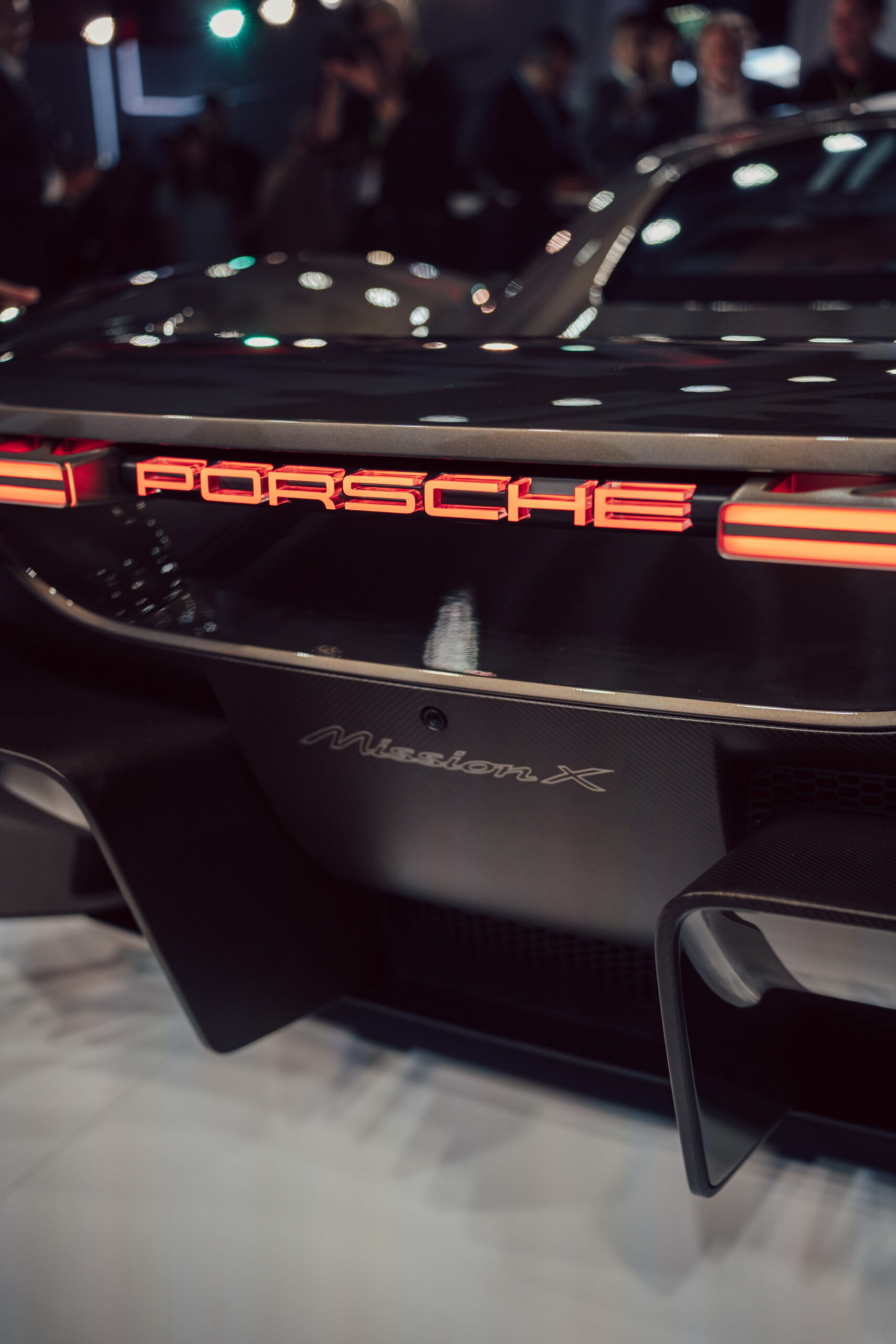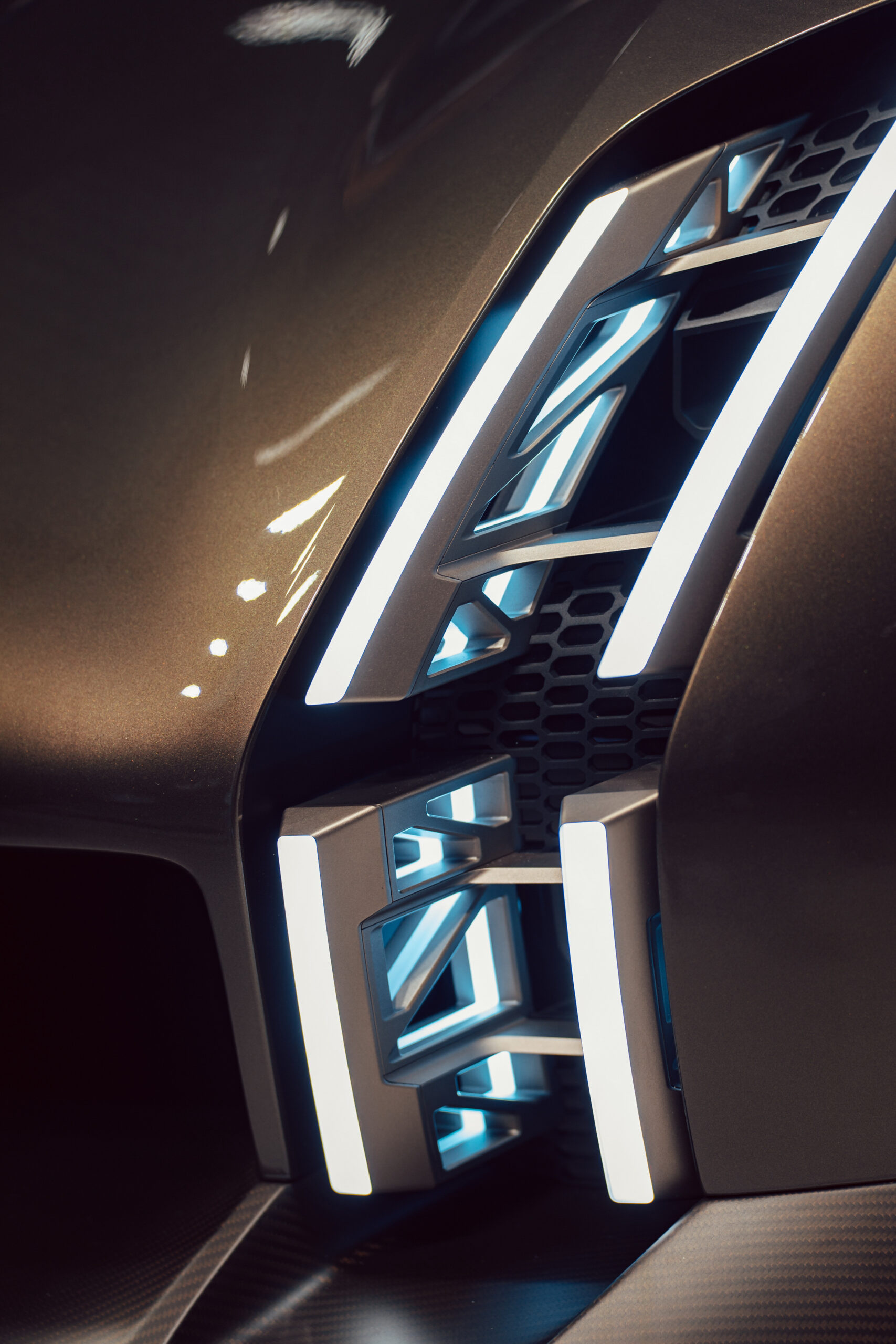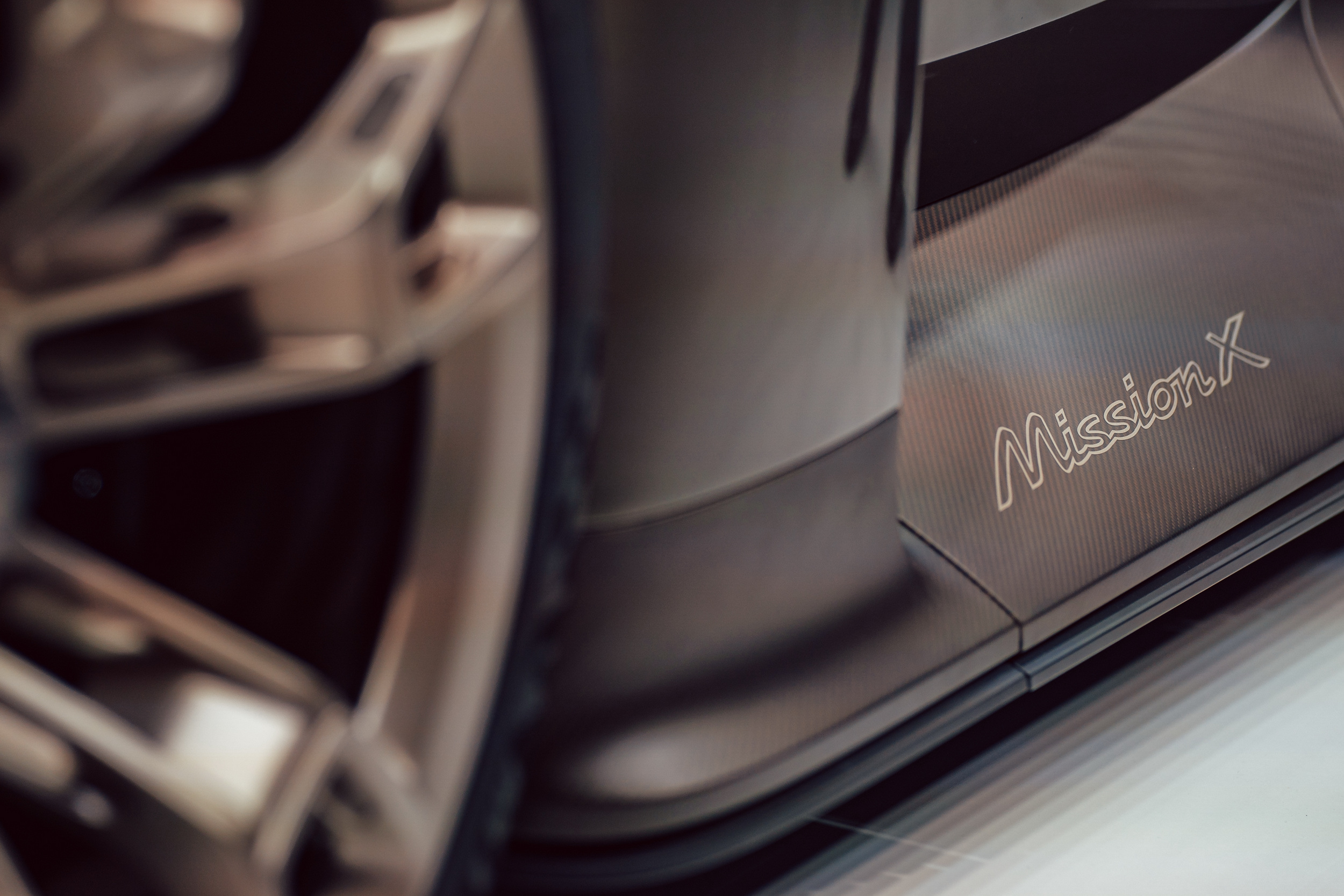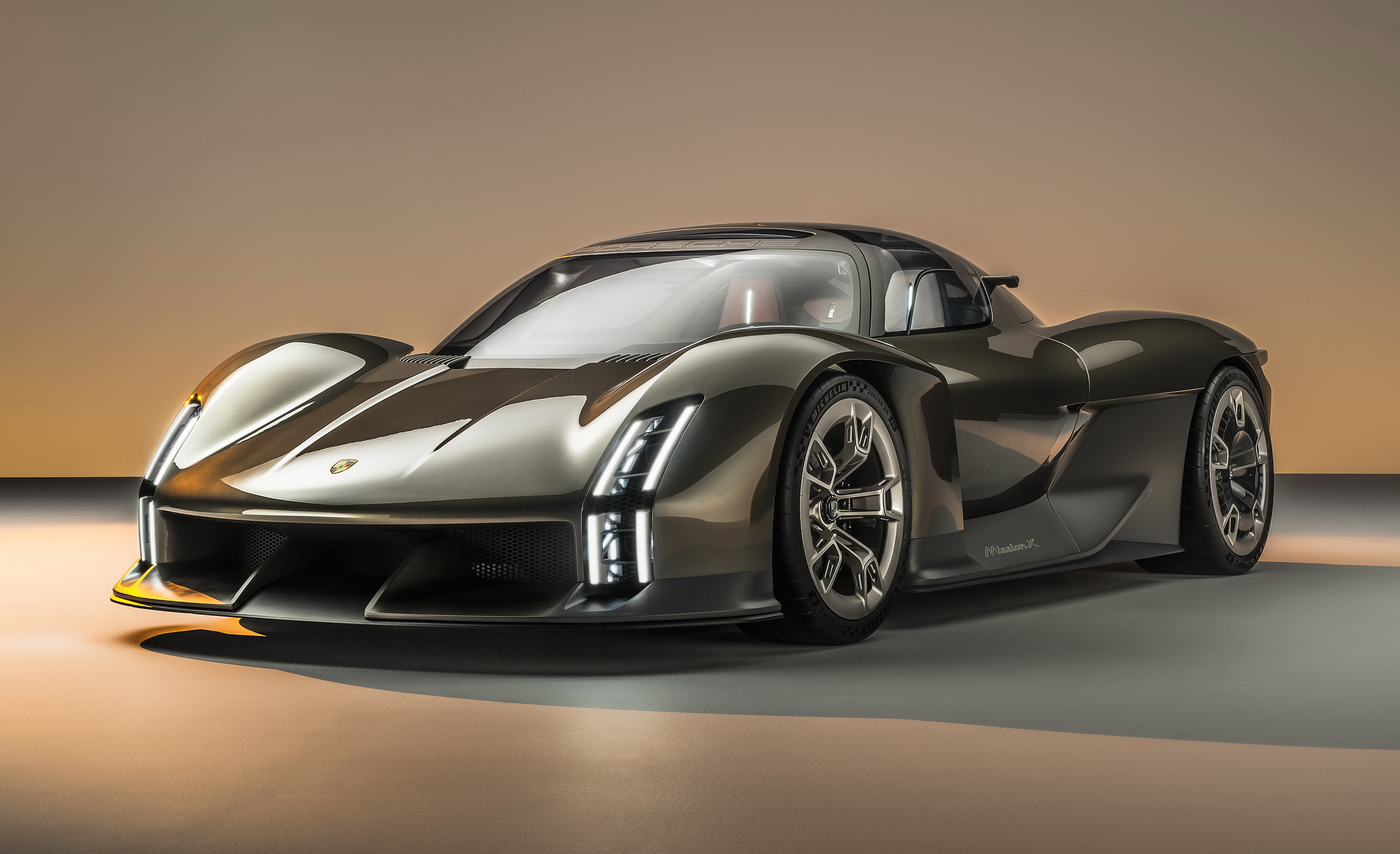A decade ago the Porsche 918 Spyder hybrid was one of three new hypercars that proved electrification wasn’t just for gas misers. Now Porsche has revealed a potential successor that junks combustion power altogether in the pursuit of game-changing performance.
It’s called the Mission X, and for now it’s officially just a concept. But we know how these things go with Porsche, the car looks showroom-ready in the pictures, and even the wording in the company’s release strongly suggests a production version will find its way into a select few millionaires’ garages before the end of this decade.
Related: The Porsche Vision 357 Is A Retrotastic Homage To The Original 356
Porsche needs a halo car to maintain its image as a performance leader, and the Mission X’s program objectives make it clear that it wants to stand right at the front of the pack, just like the 918 and Carrera GT did before it. Top of those objectives is to be the fastest street-legal production car around the Nürburgring Nordschleife, which means beating the 6:35.183 time set by the Mercedes-AMG One last year.
How it will achieve that aim is hinted at by the next two mission objectives. One is to deliver ‘significantly’ more downforce that the current 911 GT3 RS, which Porsche says offers 1,895 lbs (860 kg) at 177 mph (285 kmh). And the other is to posses a power-to-weight ratio of roughly one horsepower per 2.2 lbs, or 1 PS per kg.
Neither the current electric hypercar heroes, the Rimac Nevera and the related Pininfarina Battista get close to that ratio, each having around 1,900 hp (1,926 PS) to offset their 4500+ lbs (2,0241 kg) curb weights. We don’t know if the Mission X will be as powerful as those cars, but we can be sure it’ll be a whole lot less heavy. Some European media outlets are claiming it will have 1,500 hp (1,521 PS), which would put the curb weight at an incredibly low 3,353 lbs (1,521 kg).
At 177-inches (4,596 mm) long, 78.7 inches (1,999 mm) wide and 47.2 inches (1,199 mm) tall, the Mission X is shorter but wider and taller than the old 918 Spyder. The 107.4 (2,728 mm) wheelbase is almost identical, but visually it’s a very different car with some very different design elements. The most striking of those are the large lightweight dome that extends over driver and passenger and the Le Mans-style doors that hinge forwards and upwards in true hypercar style. The 918, you might remember had boring old sedan-style doors.
Inside, we find carbon-shell bucket seats with different colors for the passenger and driver chairs to make it clear who’s boss, multiple cameras to record the action and an optional stopwatch module with both an analog and digital display.
Beyond the power to weight ratio and the fact that the unspecified battery sits behind the seats, just like it will in the new electric 718 Cayman, we don’t know much about the powertrain setup, such as how many motors it has. But Porsche did drop one fascinating nugget of information revealing that the 900-volt electrical architecture will allow it to charge twice as quickly as a current Porsche Taycan, itself already one of the quickest-charging EVs in the world. Whatever witchcraft makes that possible, expect it to filter down to other Porsches in the coming years.




